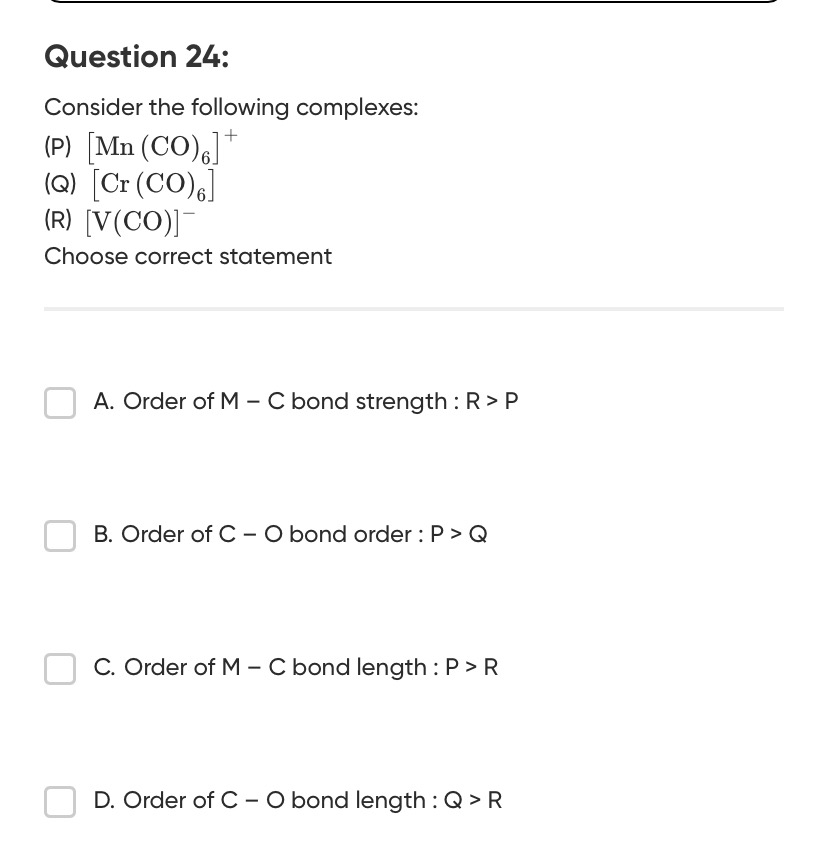Question
Question: Consider the following complexes: (P) $[Mn (CO)_6]^+$ (Q) $[Cr (CO)_6]$ (R) $[V(CO)]^-$ Choose corre...
Consider the following complexes: (P) [Mn(CO)6]+ (Q) [Cr(CO)6] (R) [V(CO)]− Choose correct statement

Order of M - C bond strength : R > P
Order of C - O bond order: P > Q
Order of M - C bond length : P > R
Order of C - O bond length : Q > R
A, B, C, and D are all correct statements.
Solution
The strength of π-backbonding in metal carbonyls is directly proportional to the electron density on the metal atom, which increases with decreasing oxidation state. The oxidation states are:
- (P) [Mn(CO)6]+: Mn is +1
- (Q) [Cr(CO)6]: Cr is 0
- (R) [V(CO)]−: Assuming this is [V(CO)6]−, V is -1.
The order of electron density is V(-1) > Cr(0) > Mn(+1), leading to the order of π-backbonding strength: R > Q > P.
Increased π-backbonding results in:
- Increased M-C bond strength: Stronger backbonding leads to a stronger M-C bond.
- Decreased C-O bond order: Electron donation into CO π∗ orbitals weakens the C-O bond.
- Decreased M-C bond length: Stronger bonds are shorter.
- Increased C-O bond length: Weaker bonds are longer.
Analyzing the options: A. Order of M - C bond strength : R > P: Since backbonding strength is R > P, M-C bond strength follows R > P. This is correct. B. Order of C - O bond order: P > Q: The order of C-O bond weakening is R > Q > P. Thus, the order of C-O bond order is P > Q > R. The statement P > Q is correct. C. Order of M - C bond length : P > R: As M-C bond strength is R > P, the M-C bond length is inversely related, meaning P > R. This is correct. D. Order of C - O bond length : Q > R: As C-O bond order is P > Q > R, the C-O bond length is inversely related, meaning R < Q < P. The statement Q > R is correct.
